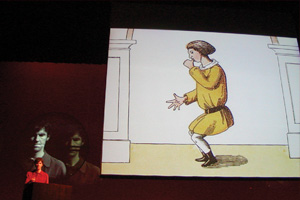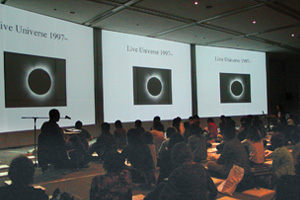Raising Content to Meet Design
Stefan Sagmeister begins by telling us that this is a pet topic of his.
His history with this topic began in New Orleans six years ago, at a
design conference, where there was the usual "Professional Fluff",
as he calls it. Read "Professional Fluff" as the assorted goody
bags, paper samples, pamphlets, and other ephemera commonly found wherever
designers gather. "Professional Fluff" exists, Sagmeister tells
us, because so few designers have strong beliefs.
Sagmeister than leads us through examples of art, design, illustration
and film that touched him throughout his life. His examples ranged from
childhood fairytales to album covers. These pieces inspired him to list
the characteristics that make design able to touch people: New Perspectives,
Trigger of Memories, Guts and Passion, Surprise, Virtuosity, Revisitability,
and last but not least, Beauty. He gives us a tour of his own work, both
before and after he was trying to touch people. His recent work includes
the campaign for the Move On organization, and a charming piece to help
his friend meet women in NYC. (Apparently, it was successful.) Sagmeister
concludes by noting that touching people with design is not formulaic,
that in the end it must come from the heart. (NR)
|
 |
 |

